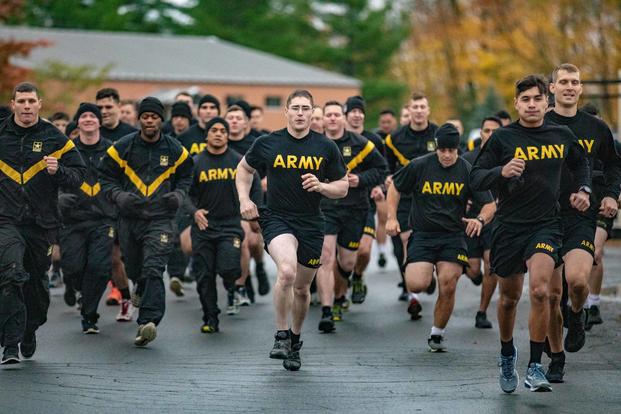Two fitness experts have a serious message for Army commanders: It's time to use science to help prevent the physical training injuries plaguing the force.
Soldiers' musculoskeletal injuries are on track to cost the Army more than 8 million duty days this year. The knee injuries, back problems and other woes far outpace any other reasons for lost duty -- they add up to five times the days lost to pregnancy and maternity leave, for example.
When it comes to physical training, there can be too much of a good thing. That's what Dr. Bruce Jones, senior scientist at the Army Public Health Center's Clinical Public Health and Epidemiology Directorate, and Todd Hoover, division chief of the Army Wellness Center Operations, have discovered as they study what's behind the host problems.
Long hikes, too much running and other longstanding PT trends could be to blame. The two detailed some of their recent research Wednesday at the annual Association of the U.S. Army convention in Washington, D.C.
"Injuries are the No. 1 medical threat to readiness," Jones said. "Musculoskeletal injuries -- due mostly to training and vigorous operational activities -- are the biggest portion of that problem."
Related: The Military Is Overhauling Troops' Chow as Obesity Rates Soar
Jones and Hoover want to help prevent some of those injuries from happening. They found a correlation between the 2-mile run time and musculoskeletal injuries.
Male soldiers who don't finish the 2-mile run in less than 15 minutes and women who take longer than 18 minutes to complete it are most at risk. The injury risks get even higher if soldiers are overweight or underweight.
Jones and Hoover want leaders whose soldiers fall into those categories to encourage them to visit the Army Wellness Center. There, soldiers' fitness levels can be carefully assessed, and they're given individualized "exercise prescriptions" to improve, Hoover said.
"What we want to do is educate leaders that this is a resource, a tool that you have, that the Army has in place," he said. "It's an existing capability and, if you have soldiers within your unit that meet these criteria, it's highly recommended you encourage them to come."
The Army has 35 Wellness Centers across the globe. They're designed to treat those most at risk for illnesses or injuries that could affect their duties. Services not only include weight management and exercise prescriptions, but also sleep education, stress management and body composition analysis.
Jones said running is the leading cause of soldiers' musculoskeletal injuries. Road marches with heavy packs and obstacle courses also play a big role.
"It appears that it's the total amount of activity that is a risk," he said. "The more miles and more footsteps you run, the bigger the hazard."
Unit PT often incorporates hikes and runs. Changing that is a big shift for Army culture, Jones said. Especially when it comes to overweight soldiers, who some may believe need to be trained harder.
"We used to conduct remedial PT, and so the least fit soldiers had to do extra push-ups and sit-ups and other activities," Jones said. "... What they really need is probably less training to get more fit."
Hoover advocated for a functional approach to fitness, such as high-intensity tactical training programs. It's not that the Army should be doing less when it comes to physical training, he said, but leaders must take an objective look at what works and what doesn't -- especially if what the service is doing currently is leading to injury.
"One thing that happens in the general population is we think to solve a problem, we have to do more," Hoover said. "More intensity, more training and all that stuff. But the reality is, sometimes it takes more of a precision approach as to how we solve the problem."
-- Gina Harkins can be reached at gina.harkins@military.com. Follow her on Twitter @ginaaharkins.
Read more: Men and Women Seeing Different Failure Rates on Army's Gender-Neutral Fitness Test














